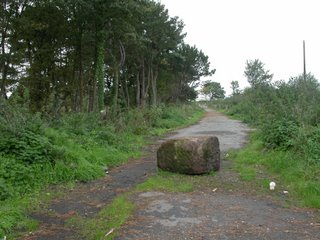
12/10/06
Sunshine and dark clouds
I start my day down by Speke Hall, L24, ready to map the disused airport which is accessible by foot from Bailey’s Lane. I pulled up and saw a man peering into the undergrowth along the Lane. Either he was up to no good, or he was searching for wildlife. Of course it was the latter. How better to spend time waiting for a flight …? And to think…most people will hang around at the airport oblivious to the natural treasures on the doorstep.
What an unexpected delight… I had stumbled across a moth expert - Kev Moth-man, hunting for evidence of leaf mining. Kev, a retired engineer, became interested in moths in the early 90’s. In 1994 he began to study moths and 12 years later he is a self-taught expert. A member of the Lancashire Moth Society - www.lancashiremoths.co.uk Kev dedicates much of his time to time to his passion – moth taxonomy, or, finding and recording moths and moth activity throughout Lancashire. So why conduct scrupulous inspections of the undergrowth here in Merseyside?
Kev explained, that in 1860 or thereabouts, vice counties were formed, and Lancashire was divided into 2 vice counties – VC 59, which coveres the area between the River Mersey and the River Ribble, and VC 60 – from the Ribble to Silverdale.
Until 1973, Merseyside was still part of Lancashire. So from 1860 – 1973, all taxonomy - moth or otherwise – was vice county specific. Taxonomists like Kev believe it is important that new records stay vice county specific, to keep the data coherent.

0 Comments:
Post a Comment
<< Home